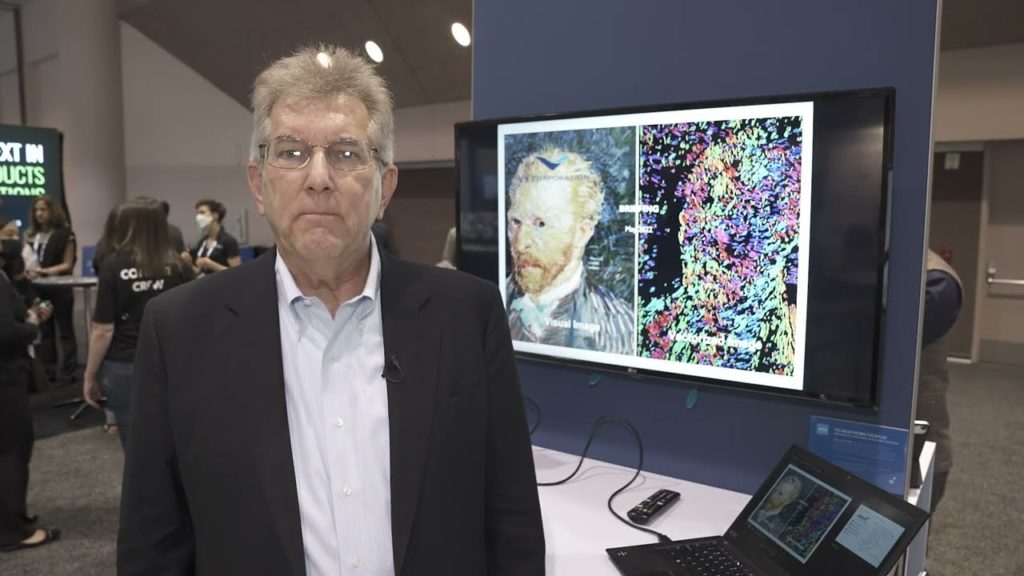John Freyhof, CEO of Vy Corporation, demonstrates the company’s latest edge AI and vision technologies and products in Intel’s booth at the 2022 Embedded Vision Summit. Specifically, Freyof demonstrates the solution to a real-world problem of detecting a sub-surface mine in a very low signal-to-noise environment, and how the same approach can be applied to objects of interest from the COCO dataset.
Bézier-Enhanced Deep Learning is a powerful new technique to combine shape vectorization and RGB color in traditional deep learning systems to improve convergence by 50–100x using over ninety-five percent fewer training vectors, thereby producing an audit trail to improve reliability and accuracy. Freyhof demonstrates how faster convergence with fewer training vectors can be accomplished by applying transparent and auditable mathematical models (Bézier curves and decision trees) to collect hard data from visual imagery that significantly increases the speed and accuracy of object recognition.
Deep learning systems are very good at learning, but they are not good at abstraction. Changes in lighting and angles can cause unexpected decisions. ARIES (the Abstraction, Reasoning, Interpretation, Extrapolation Suite), Vy’s novel vectorization solution, is very good at abstraction and ideally positioned to bridge the unpredictability gap with existing AI systems while producing comparable or better results with several orders of magnitude less processing time.
Intel technology used in the demo includes:
- The Intel AI Analytics Toolkit (AI kit)
Vy is an artificial intelligence software company. The company has developed and patented a platform to vectorize and make decisions about “big data” imagery generated by satellite, video, and radar allowing for:
- Superhuman performance with no training
- Auditable and transparent decision-making
- Faster, more reliable recognition and characterization
We call this platform ARIES. We are targeting use cases for commercial (utility and insurance), life sciences, and government customers where data is time consuming and difficult to collect. Our process is very compute-intensive and Intel’s optimization tools and expertise are essential to meet customer requirements for near-realtime processing.
Vectorization turns related pixels into mathematical functions. Key competitive differentiators are the ability to query our novel vectorized image data using widely available tools like Python, as well as an ability to fuse our data with existing platforms and systems to make faster and more reliable decisions. This is disruptive technology in the sense that the approach is radically different from all other methodologies currently being used for deep learning. ARIES can be combined seamlessly with existing systems as a cloud-based SaaS platform or run stand-alone on premise.


